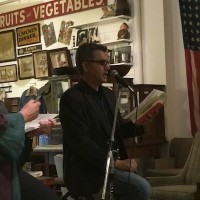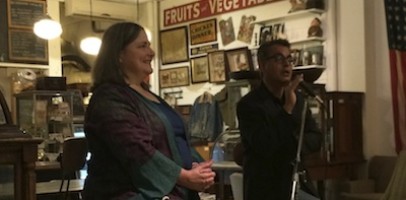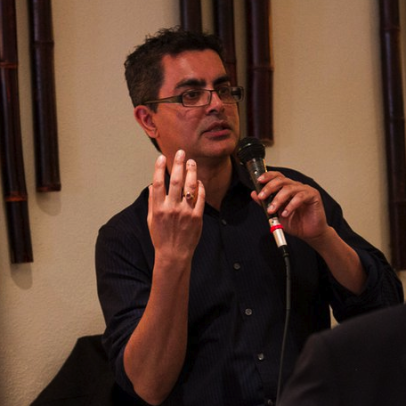AMITAVA KUMAR is a writer and journalist. He was born in Ara, India, and grew up in the nearby town of Patna, famous for its corruption, crushing poverty and delicious mangoes. Kumar is the author of several books of non-fiction (A Matter of Rats, A Foreigner Carrying in the Crook of His Arm a Tiny Bomb, Husband of a Fanatic, Bombay-London-New York, Passport Photos) and a novel (Nobody Does the Right Thing, also published as Home Products). A Foreigner Carrying in the Crook of His Arm a Tiny Bomb was adjudged the best nonfiction book of the year by the Page Turner Awards in 2011; in 2007, Home Products was short-listed for India’s premier literary award, the Crossword Award; Husband of a Fanatic was an “Editors’ Choice” book at the New York Times. In 2015, a collection of essays entitled Lunch With A Bigot will be published by Duke University Press. He lives in Poughkeepsie, where he is Helen D. Lockwood Professor of English at Vassar College.
Read Nina Shengold’s Chronogram profile.
“Location, Location” 10/2/14 – The Exercises
Our topic on October 2 was “Location, Location.” Vassar professor and multigenre writer Amitava Kumar delighted a rapt audience by reading several passages from his book A Matter of Rats, sprinkling in stories about how he constructed this short biography of his hometown, Patna, India.
Amitava passed out a page with 11 brief writings by Arundhati Roy, Jonathan Franzen, David Foster Wallace, David Wojnarowicz, Denis Johnson, Amy Hempel, J.M. Coetzee, Lydia Davis, Joan Didion, and Ismat Chughtai. Volunteers read several of these aloud, and we had a lively discussion about the specific choices and details that bring them to life.
Nina quoted an essay by Nancy Willard, recounting a game she’d played with her sister in which one girl would close her eyes as the other described a place, adding details until the listener cried out, “I’m there!”
We talked about using a concrete detail to anchor a fictional description of a place you’ve never been, or asking someone who does live there to vet the details; James Joyce sent his sister to check on things while writing about Dublin from Paris. It’s often easier to write about a place you remember than one where you’re living now, because memory distills it to essentials. Amitava likened this to the difference between the depth of field of an iPhone camera, which renders everything in a photo in focus, and a professional SLR camera, which can be focused selectively so that one object is sharp and others are blurred or pushed into the shadows.
- Amitava read a passage from Joseph O’Neill’s Netherland including a phrase about “Poughkeepsie, a merry name that sounds like children crying out in a game.” He asked each of us to consider the sound and feel of our hometown’s name and write a sentence or two connecting that name to the place. (The ones people read were wonderful!)
- Another exercise from Amitava: Describe what can you see outside the window closest to where you write.
- Click to open Amitava Kumar’s handout.
- From Nina: Write a detailed description of leaving home for a place you (or your character, if you’re writing fiction) have never gone before. Part two: write about arriving in that new place, using all five senses.
Amitava recommended a daily practice of writing a small, achievable amount, citing “as much as it takes to cover a Post-It” from Anne Lamott’s Bird By Bird. He sets his students a mantra: “Write every day and walk every day.” 150 words and ten minutes of mindful walking. It all adds up.


